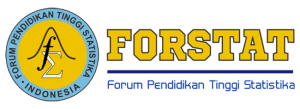Performance Study of Prediction Intervals with Random Forest for Poverty Data Analysis
DOI:
https://doi.org/10.34123/jurnalasks.v16i1.542Keywords:
LM, SPI, Quant, HDR, CHDRAbstract
Introduction/Main Objectives: Determine the prediction interval with for analyzing poverty data at the Regency/City level in Indonesia. Background Problems: Poverty will be a topic in various discussion and debates in the future. Novelty: This study’s methods for constructed prediction intervals are LM, Quant, SPI, HDR, and CHDR. This method can improve the prediction interval performance with Random Forests. Research Methods: The method for building forests and obtaining BOP in this study is CART with the LS splitting rule. Finding/Results: The results of this study are that the best method for one replication is HDR with 500 trees. The best method for 100 repetitions is LM. Based on hypothesis testing, there is sufficient evidence to say no difference between the LM, SPI, Quant, HDR, and CHDR methods for 100 replications at a 5% significance level.
Downloads
References
Alakus, C., Larocque, D., & Labbe, A. (2021). RFpredInterval: An R Package for Prediction Intervals with Random Forests and Boosted Forests. ArXiv Preprint ArXiv:2106.08217.
Anggadini, F. (2015). Analisis Pengaruh Angka Harapan Hidup, Angka Melek Huruf, Tingkat Pengangguran Terbuka dan Pendapatan Domestik Regional Bruto Perkapita Terhadap Kemiskinan pada Kabupaten/Kota di Provinsi Sulawesi Tengah Tahun 2010-2013. Katalogis, 3(7).
Aulele, S. N., Ilwaru, V. Y. I., Wuritimur, E. R., & Matdoan, M. Y. (2021). Analisis Jumlah Penduduk Miskin di Provinsi Maluku dengan Menggunakan Pendekatan Regresi Spasial. Jurnal Aplikasi Statistika & Komputasi Statistik, 13(2), 23–34.
Damanik, R. K., & Sidauruk, S. A. (2020). Pengaruh jumlah penduduk dan PDRB terhadap kemiskinan di Provinsi Sumatera Utara. Jurnal Darma Agung, 28(3), 358–368.
Ellah, N. (2016). Analisis Pengaruh Faktor-Faktor yang Berpengaruh Terhadap Kemiskinan di Jawa Timur. Jurnal Ilmiah Mahasiswa Feb, 4(1).
Pramesti, N. A., & Bendesa, I. K. G. (2018). Pengaruh Faktor Sosial Ekonomi terhadap Kemiskinan di Provinsi Bali. E-Jurnal EP Unud, 7(9), 1887–1917.
Rinaldi, A. (2019). Model persamaan struktural untuk menganalisis indikator kesejahteraan rumah tangga. Desimal: Jurnal Matematika, 2(3), 281–288.
Roy, M.-H., & Larocque, D. (2020). Prediction intervals with random forests. Statistical Methods in Medical Research, 29(1), 205–229.
Sinaga, S. P., Wanto, A., & Solikhun, S. (2019). Implementasi Jaringan Syaraf Tiruan Resilient Backpropagation dalam Memprediksi Angka Harapan Hidup Masyarakat Sumatera Utara. Jurnal Infomedia: Teknik Informatika, Multimedia & Jaringan, 4(2), 81–88.
Sugiyono, L., & Ningsih, S. (2018). Analisis Potensi Penyebab Rumah Tangga Miskin Jawa Tengah. Jurnal Aplikasi Statistika & Komputasi Statistik, 10(2), 25.
Suryawati, C. (2005). Memahami kemiskinan secara multidimensional. Jurnal Manajemen Pelayanan Kesehatan, 8(03).
Wicaksono, A. S., & Yolanda, A. M. (2021). Pengelompokkan Kabupaten/Kota di Provinsi Nusa Tenggara Timur Berdasarkan Indikator Indeks Pembangunan Manusia Menggunakan K-Medoids Clustering. Jurnal Statistika Terapan (ISSN 2807-6214), 1(1), 79–90.















